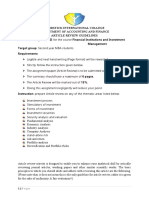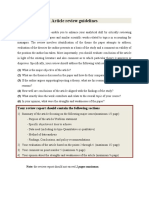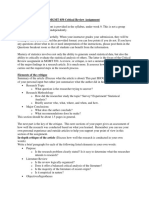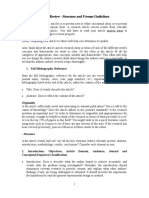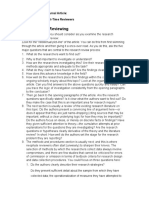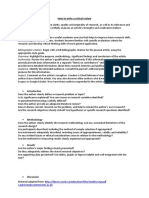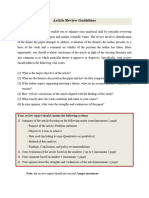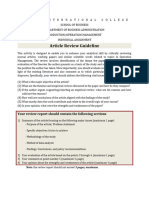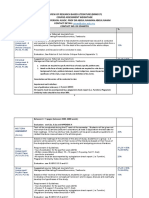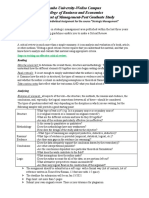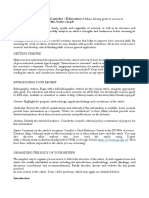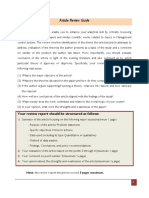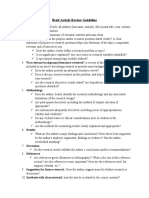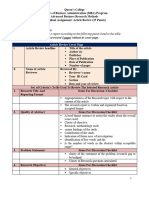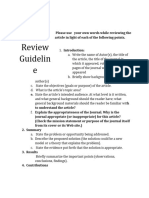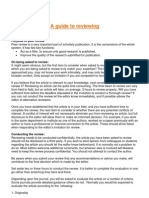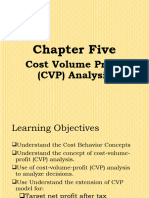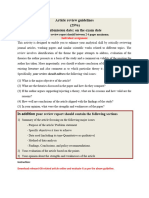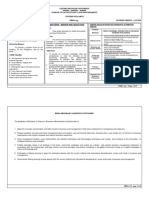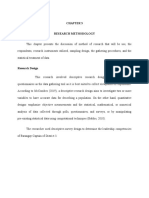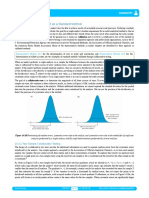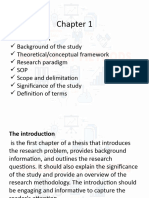RVU
School of Postgraduate Studies
MBA program
Group Assignment 1 for the course: Accounting and Finance for Manager
Maximum mark 25
Article review: on
Role of accounting in managerial decision making
Accounting practice in different companies
Handle the review by selecting only one title
ARTICLE REVIEW GUIDELINES
Article review activity is designed to enable you to enhance your analytical skill by critically
reviewing journal articles, working papers and other similar scientific works. The basic
principles to which you should abide and adhere with reviewing this article are the following.
(Please note that, it does not mean this is the only guideline for article review; rather it is given
for the sake of uniformity & fair evaluation!!)
Your review report should contain the following sections:
1) Summary of the article focusing on the following major issues (a summary of the article
(author’s main points) in your own words (this part can be rather brief)):
- Purpose of the article/ Problem statement/ gap that the article addresses
- Major and specific objectives it tries to achieve
- Data used (including its type-quantitative or qualitative)
- Method of data analysis
- Findings, Conclusions, recommendations and implications.
2) Your opinion about the strengths and weaknesses of the article (critical analysis on novelty of
the study, literature review, methodology, presentation, arguments, and conclusion and
implications).
3) The general contribution/s/ of the work to the overall topic of your course if any.
Note:
1) The review report for an article should not exceed a maximum of 4 pages.
2) Date of Submission: Final exam date.
3) Furthermore, you should include in the information in the following order.
� a) Your name and class information;
b) Full bibliographical information for the article being reviewed, according to an
accepted format (the Turabian form used by most of the humanities disciplines is to
be preferred), as in the following template (for a journal article):
Author’s Last Name, First Name. “Title of the Article.” Journal Title Volume/Issue (Date):
page-numbers.
Further, consider the following points of critiques that are usually helpful when reviewing an
article:
1) Originality/Novelty/ of the study: Does the paper contain new (novel) ideas and significant
information? Is the reviewed article a study with an original scientific contribution? Is there
new gap that the article addresses?
2) Relationship to Literature: Does the paper demonstrate an adequate understanding of the
relevant literature in the field and cite an appropriate range of literature sources? Is any
significant work ignored? Is the literature research sufficient? Does the research use a
theoretical and/or conceptual model? Does the literature review seem thorough & recent
(within the last 5 years)? Does the content of the literature review relate directly to the
research problem? Is the review of literature relevant to the research question?
3) Methodology: Is the paper's argument built on an appropriate base of theory, concepts, or
other ideas? Has the research or equivalent intellectual work on which the paper is based
been well designed? Are the methods employed appropriate? Are the used models and
methods suitable for the research topic and purpose? Is the used research method adequately
valid and reliable? Are the methods consistent with the theory? Were the inclusion/exclusion
criteria specified for subject to be studied? How representative is the sample? Is the context
of the data appropriate for the research question? Do the selected statistical tests appear
appropriate?
4) Results, Discussions and Conclusion: Are results presented clearly and analyzed
appropriately? Are the tables, figures and graphs used in this study relevant and clear? Is the
explanation of the findings systematically presented and well-organized? Are the data and
findings of the study compared sufficiently with other similar studies? Are the findings of the
article aligned with the objective of the study? Is the conclusion part of the study clear,
understandable and sufficient? Does the conclusion adequately tie together the other
elements of the paper?
5) Implications for research, practice and/or society: Does the paper identify clearly any implications for
research, practice and/or society? Does the paper bridge the gap between theory and practice? How can the
research be used in practice (economic and commercial impact), in teaching, to influence public policy, in
research (contributing to the body of knowledge)? What is the impact upon society (influencing public attitudes,
affecting quality of life)? Are these implications consistent with the findings and conclusions of the paper?
6) Quality of Communication: Does the paper clearly express its case and measured against the technical
language of the field? Has attention been paid to the clarity of expression and readability, such as sentence
structure, jargon use, acronyms, etc? Is the text both grammatically accurate and clearly phrased?
